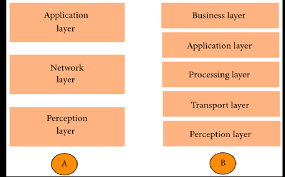Number System
The data stored in the computer
may be of different kinds, as follows—
· Numeric
data (0, 1, 2, …, 9)
· Alphabetic
data (A, B, C, …, Z)
· Alphanumeric
data—Combination of any of the symbols—(A, B, C… Z), (0, 1… 9), or special characters (+,−,
Blank), etc.
All kinds of data, be it
alphabets, numbers, symbols, sound data or video data, is represented in terms
of 0s and 1s, in the computer. Each symbol is represented as a unique
combination of 0s and 1s.
NUMBER SYSTEM
A number system in base r or radix r uses unique symbols
for r digits. One or more digits are combined to get a number. The base of the
number decides the valid digits that are used to make a number. In a number,
the position of digit starts from the
right-hand side of the number. The rightmost digit has position 0, the next
digit on its left has position 1, and so on. The digits of a number have two
kinds of values—
·
Face
value, and
·
Position value.
The face value of a digit is the digit located at that position. For
example, in decimal
number 52, face value at position 0 is 2 and face value at
position 1 is 5.
The position value of a digit is (baseposition). For example, in decimal
number 52, the
position value of digit 2 is 100 and the position value of digit 5 is 101. Decimal numbers
have a base of 10.
The number is calculated as the sum of,
face value * baseposition,
of each of the digits.
For decimal number 52, the number is 5*101 + 2*100 = 50 + 2 = 52
In computers, we are concerned
with four kinds of number systems, as follows—
·
Decimal
Number System —Base 10
·
Binary
Number System —Base 2
·
Octal
Number System —Base 8
·
Hexadecimal
Number System—Base 16
The numbers given as input to
computer and the numbers given as output from the computer, are generally in
decimal number system, and are most easily understood by humans. However,
computer understands the binary number system, i.e., numbers in terms of 0s and
1s. The binary data is also represented, internally, as octal numbers and
hexadecimal numbers due to their ease of use.
A number in a
particular base is written as (number)base of number For example, (23)10
means that the number
23 is a decimal number, and (345)8 shows that 345 is an octal
number.
Decimal Number System
·
It
consists of 10 digits—0, 1, 2, 3, 4, 5, 6, 7, 8 and 9.
·
All
numbers in this number system are represented as combination of digits 0-9. For example, 34, 5965 and 867321.
·
The
position value and quantity of a digit at different positions in a number are as follows—
 |
Binary Number System
·
The
binary number system consists of two digits—0 and 1.
·
All
binary numbers are formed using combination of 0 and 1. For example, 1001, 11000011 and 10110101.
·
The
position value and quantity of a digit at different positions in a number are as follows—
Octal Number System
· The
octal number system consists of eight digits—0 to 7.
· All
octal numbers are represented using these eight digits. For example, 273, 103, 2375, etc.
· The
position value and quantity of a digit at different positions in a number are as follows—
 |
|
Hexadecimal Number System
·
The
hexadecimal number system consists of sixteen digits—0 to 9, A, B, C, D, E, F, where (A is for 10, B is for 11, C-12,
D-13, E-14, F-15).
·
All
hexadecimal numbers are represented using these 16 digits. For example, 3FA, 87B, 113, etc.
·
The
position value and quantity of a digit at different positions in a number are as follows—







Comments
Post a Comment